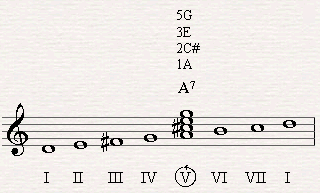The Secondary Dominant ChordAlright guys', learning about the secondary dominant chord is the last issue we're going to cover before I show you wonderful examples of many of the chord progressions we've been learning in songs we're all familiar with. Let's rewind for a moment. When we started talking about the world of harmony we discussed three main functions that create the movement within each and every chord progression.
Click here to cover this issue in details in this page called "Three chords and the truth." Today I'd like to talk about the dominant chords of the other scale degrees. But we know already that the dominant chord is functioning as a dominant only when a major chord is being pressed; so what do we do when the fifth of a chord is a minor chord?
But let's look at it from a harmonic point of view? Where did this chord derive from? And the answer is easy. We simply borrowed this chord from its major twin thus E7 the dominant of Am is taken from A major scale. Now let's try the dominant chords of the other scale degrees by borrowing their second dominant chords from the major twin. Let's take the second degree of Am (Dm). If we look for its upper fifth (For we always fall in fifths) we get the A minor chord.
To make a long story short I add here an image of all the secondary dominant of each and every scale degree in C major. I suggest you play this example until you know it by heart. It will bring you BIG returns in the future. When you'll look above the secondary dominant of each chord (in the second half of the bar) you'll see two signs and a slash. The upper sign stated that this chord is a dominant of the lower sign. V/IV would be the dominant of the fourth degree. 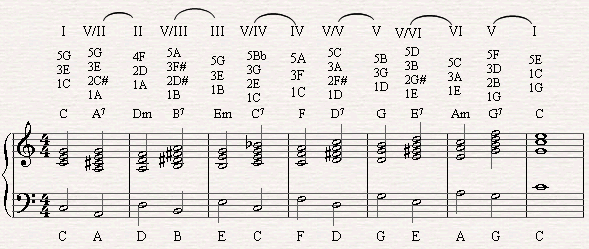 And here's a free piano chord chart of all major and minor scales. I'm proud to tell you we're now far enough to try out and play many great pop songs. I'm sure you're going to like playing all these songs with the extra pleasure of understanding what you're really performing. Let's go! (coming soon)
|
How To Play Piano by ChordsTHE FAST AND EASY WAY TO LEARN PIANO! The Ultimate Piano by Chords Learning Kit "Your entire site is simply fantastic. I really loved it. Now I am learning the basics of piano by myself, with your really great help. Thank you very much!" Jaime C. from Brazil "I only started to play about six weeks ago but the last hour of watching your videos about chord progressions has been something of a revelation. You're brilliant!!!!" Stephen Roberts from U.S.A "I'm a beginning keyboard player and your video's are an excellent guide. You're absolute not in a hurry, and take time to explain. I'm sure I'll follow all your lessons to get the hang of playing the piano/keyboard!" Wouter E. from the Netherlands "Thanks for all your work ( tuto and others ). You're doing a really great job, You're the best internet teacher I know." Anthony Hassen Cohen from France |
||||
|
Enjoy This Site?
Then why not use the button below, to add us to your favorite bookmarking service? |
|||||
|
| Homepage |
Site Map |
Just Added |
Buy Us Coffee! |
Sign up / Freebies |
Recommended Products |
Articles & Reviews |
Blog |
Beginners Course |
Accompaniment Course |
Notes Lessons |
Playing Technique | Chords | Theory| Tutorials | Sheets | Forum | Piano Videos | History | Piano Stuff| Keyboards and Pianos| |
|||||
|
Copyright piano-play-it.com © 2008-2017. | |||||

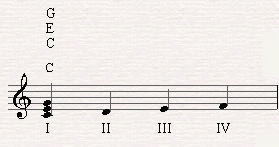
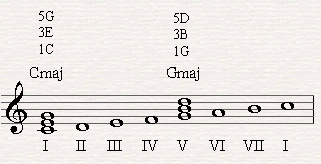
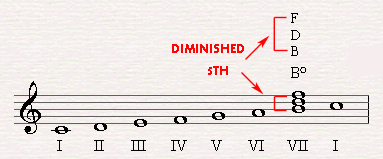
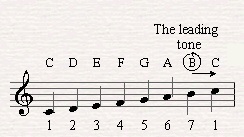 The third note of the fifth degree (If we take C major for example Then G (G, B, D) would be the dominant chord) is the leading tone (seventh note) of the scale (B is the leading tone in C major scale) which is the note that wants to go back to the C note in the most obvious way.
The third note of the fifth degree (If we take C major for example Then G (G, B, D) would be the dominant chord) is the leading tone (seventh note) of the scale (B is the leading tone in C major scale) which is the note that wants to go back to the C note in the most obvious way. We have added the seventh note of the dominant chord in order to increase even more the tension toward the C chord for F the fourth note in C major is an outside note pointing clearly toward E the third note of C major (So we created a G7 chord as the dominant seven of C major scale by adding the F note to the G triad chord).
We have added the seventh note of the dominant chord in order to increase even more the tension toward the C chord for F the fourth note in C major is an outside note pointing clearly toward E the third note of C major (So we created a G7 chord as the dominant seven of C major scale by adding the F note to the G triad chord).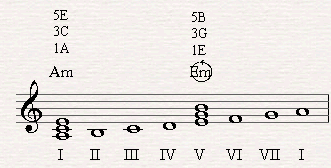
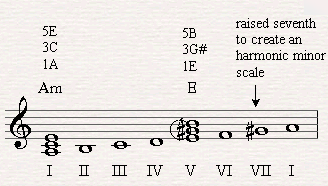
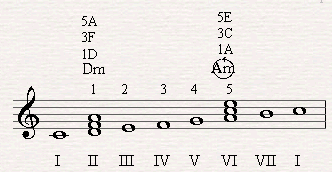 This chord however cannot function as a dominant since it is not a major chord.
This chord however cannot function as a dominant since it is not a major chord.